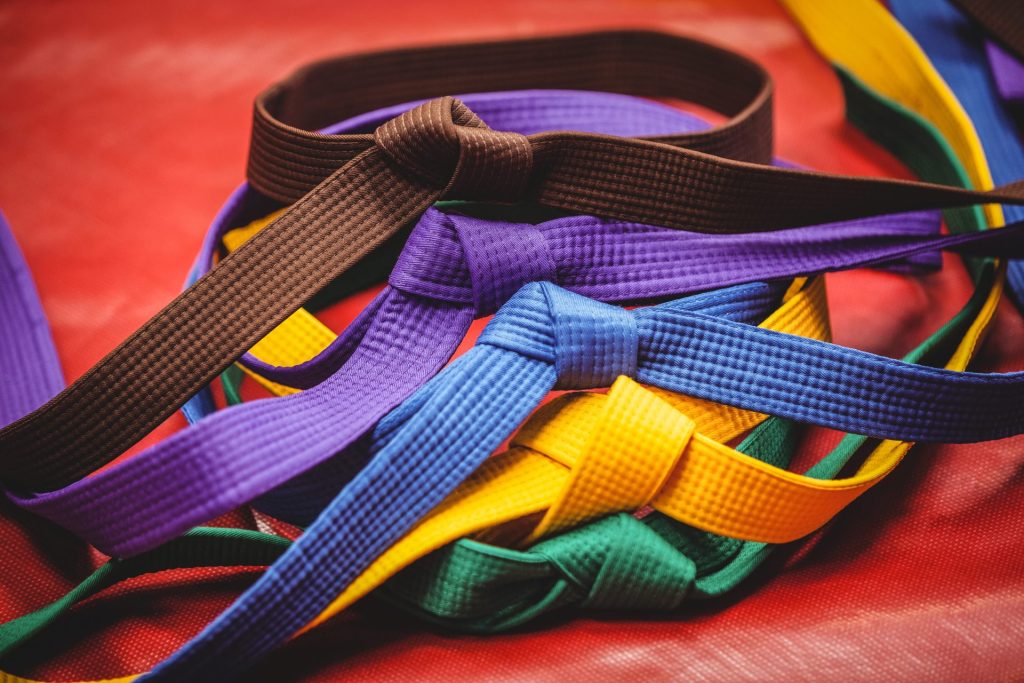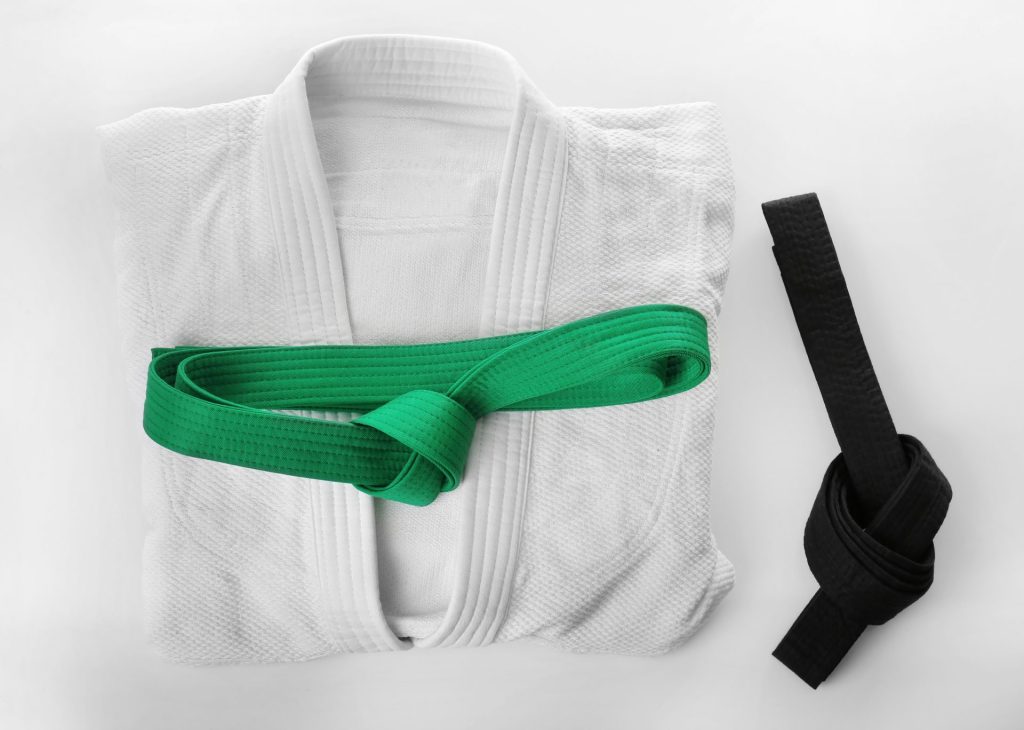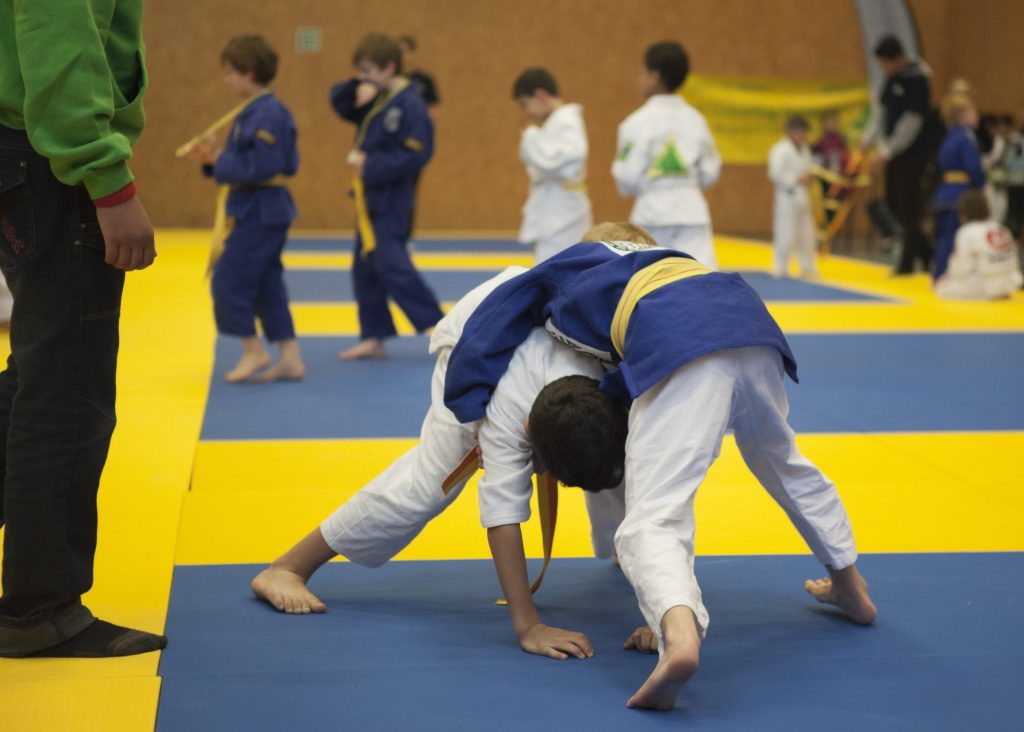If you’re interested in learning Jiu Jitsu, you may have heard of the various belt ranks that practitioners can achieve. But do you know what each belt signifies and how they fit into the hierarchy of the martial art?
Jiu Jitsu is a popular form of martial art that originated in Japan and was later developed in Brazil. It involves grappling and ground fighting techniques and is known for its emphasis on leverage and technique over brute strength. The belt ranking system is an essential part of Jiu Jitsu, indicating a student’s level of proficiency and mastery.
Understanding the Jiu Jitsu belt ranking system is crucial for any student looking to progress in art. A belt promotion isn’t just a celebration of achievement, but also an indication of responsibility, respect, and commitment. In this article, we’ll cover the various belt ranks and what they signify, so you can better understand the hierarchy of this dynamic martial art.
Contents
Overview Of The Belt Ranks In Jiu Jitsu
The origins of the Jiu Jitsu belt system can be traced back to Japan in the 19th century. At that time, Jiu Jitsu consisted of various schools, each with its own methods and practices. The belt system was introduced by Jigoro Kano, the founder of Judo, in the early 20th century as a way of recognizing and promoting the skill levels of his students.
In the early 20th century, a Japanese Jiu Jitsu master named Mitsuyo Maeda migrated to Brazil, where he eventually taught his art to a family named Gracie. One of the Gracie family members, Carlos Gracie, further developed and refined the techniques, eventually creating what is now known as Brazilian Jiu Jitsu (BJJ).
During the early stages of BJJ, there were only two belt colors: a white belt for beginners and a black belt for advanced practitioners. This simplified system emphasized the importance of mastering fundamental techniques before progressing to higher levels.
Today, there are many more colors in the Jiu Jitsu belt system, including red and white, red, and coral belts. These higher-level belts are awarded to practitioners who have reached the highest levels of skill and knowledge in Jiu Jitsu.
Overview Of The Brazilian Jiu Jitsu Belt Rank Hierarchy – White, Blue, Purple, Brown, And Black
White Belt: The Beginning
The white belt represents the starting point in a practitioner’s Jiu Jitsu journey. It symbolizes humility, openness to learning, and the willingness to embrace the fundamentals of the art. White belts are introduced to the core techniques, positions, and submissions, along with the etiquette and culture of Jiu Jitsu.
White belts focus on self-defense techniques, which lay the foundation for more advanced moves.
Some common requirements for the white belt include:
- Learning basic positions such as guard, mount, side control, and back control.
- Developing an understanding of fundamental sweeps, escapes, and submissions.
- Drilling techniques and positional sparring.
- Participating in live rolling sessions to practice techniques.
Blue Belt: The Foundation
The promotion to the blue belt signifies the transition from a beginner to an intermediate level practitioner. Blue belts have developed a solid foundation and a more comprehensive understanding of Jiu Jitsu techniques. They continue to refine their skills while expanding their repertoire of techniques and improving their positional control and escapes.
At the blue belt level, practitioners focus on expanding their technique repertoire, including sweeps, submissions, and escapes.
Common requirements for the blue belt include:
- Expanding the repertoire of techniques, including more advanced sweeps, submissions, and transitions.
- Developing a better sense of timing and distance control.
- Improving positional escapes and defenses.
- Participating in regular sparring sessions.
- Gaining experience in local and regional competitions.
Purple Belt: The Intermediate Level
The purple belt is a significant milestone in a practitioner’s Jiu Jitsu journey. It represents a higher level of technical proficiency and a deeper understanding of the art. Purple belts refine their techniques and strategies, focusing on a more intricate understanding of the principles that underpin Jiu Jitsu. Purple belts explore advanced submissions, sweeps, and positional control techniques.
Common requirements for the purple belt include:
- Expanding the range of techniques and variations, including intricate sweeps, submissions, and combinations.
- Developing a higher level of fluidity and transition between positions.
- Enhancing guard retention and passing skills.
- Developing a personal style and game plan.
- Actively competing in local, regional, and possibly national tournaments.
Brown Belt: The Expert Level
The brown belt represents the expert level in Jiu Jitsu. Brown belts have achieved a high level of mastery in the fundamentals of the art. They possess a vast repertoire of advanced techniques and combinations, along with enhanced timing, precision, and fluidity in their movements. Brown belts focus on advanced techniques and combinations, exploring the intricacies of Jiu Jitsu in greater depth.
Common requirements for the brown belt include:
- Further expanding the technical repertoire with advanced techniques, including intricate submissions, guards, and sweeps.
- Deepening the understanding of Jiu Jitsu principles and strategies.
- Refining timing, pressure, and control in different positions.
- Developing teaching and coaching skills.
- Competing at a high level in local, regional, and national competitions.
Black Belt: The Master Level
The black belt is the pinnacle of achievement in Jiu Jitsu and represents the mastery of the art. It is a culmination of years of dedication, hard work, and perseverance. Black belts demonstrate a deep understanding of strategy, tactics, and the ability to adapt to any situation on the mats.
Black belts possess a comprehensive understanding of Jiu Jitsu, from fundamental techniques to advanced strategies.
Common requirements for the black belt include:
- Mastery of a broad range of advanced techniques, including variations and combinations.
- Exceptional understanding of Jiu Jitsu concepts and principles.
- Proficiency in teaching and mentoring other practitioners.
- Actively competing and achieving success at high-level tournaments.
- Continual dedication to the art, including further learning, training, and development.
Overview of Higher Belt Ranks
Beyond the black belt, there are higher ranks that acknowledge exceptional dedication and contribution to Jiu Jitsu. The coral belt, red and white belt, and the rare red belt represent significant milestones achieved by a select few individuals who have dedicated their lives to the art of Jiu Jitsu.
The coral belt is awarded to those who have made substantial contributions to the art and have dedicated decades to its practice. The red and white belt represents a master level attained by very few practitioners, and the red belt is the highest honor, reserved for pioneers and legends of the martial art who have made an indelible impact on Jiu Jitsu.
The Significance Of Earning A Black Belt In Jiu Jitsu
Earning a black belt in Jiu Jitsu holds great significance and represents a significant achievement in martial art. Here are some key points that highlight the importance of earning a black belt in Jiu Jitsu:
Mastery of the art
Earning a black belt signifies that an individual has reached a high level of technical proficiency and understanding in Jiu Jitsu. It demonstrates a comprehensive knowledge of the fundamental techniques, principles, and strategies of the martial art.
Years of dedication
Achieving a black belt requires a significant investment of time, effort, and dedication. It typically takes several years of consistent training and practice to progress through the various belt ranks. Earning a black belt represents the culmination of this commitment and perseverance.
Personal growth and development
Jiu Jitsu is not only a physical discipline but also a mental and emotional one. The journey to a black belt involves personal growth, self-discovery, and overcoming challenges. It requires discipline, patience, resilience, and the ability to adapt and learn from mistakes. Earning a black belt signifies the development of these qualities and a deep understanding of oneself.
Recognition from the Jiu Jitsu community
Within the Jiu Jitsu community, the black belt is widely respected and acknowledged as a symbol of expertise. It signifies that an individual has reached a level of skill and knowledge that allows them to be recognized as an instructor and mentor to others. It is a mark of authority and leadership within the Jiu Jitsu community.
Teaching and mentoring others
A black belt in Jiu Jitsu carries the responsibility to pass on knowledge and skills to others. Black belts often become instructors and play a crucial role in guiding and mentoring students. They are expected to uphold the values and traditions of Jiu Jitsu and contribute to the growth and development of the art.
Continued learning and improvement
Earning a black belt does not mean the end of the journey; rather, it marks the beginning of a new phase. Black belts are encouraged to continue learning, refining their techniques, and exploring new aspects of Jiu Jitsu. It is a lifelong pursuit of growth and improvement, both on and off the mats.
How Many Belt Ranks Are There In Jiu Jitsu For Kids?
In Brazilian Jiu-Jitsu (BJJ) for kids, the belt ranking system typically follows a similar structure to the adult belt system. However, the number of belt ranks can vary depending on the specific academy or organization. The most common belt progression for kids in BJJ includes the following ranks:
- White Belt: This is the starting rank for all beginners, regardless of age.
- Grey Belt: Some academies use a grey belt as an intermediate rank between white and yellow.
- Yellow Belt: This rank represents a basic level of proficiency and understanding of the fundamental techniques.
- Orange Belt: The orange belt is often considered an intermediate rank, demonstrating continued progress and development.
- Green Belt: This rank indicates further advancement in technical knowledge and skills.
- Blue Belt: The blue belt is a significant milestone and represents a more advanced level of proficiency in BJJ.
- Purple Belt: This rank signifies a high level of technical knowledge and skill, with the ability to apply techniques effectively.
- Brown Belt: The brown belt represents advanced proficiency, often accompanied by a deep understanding of the art and a high level of expertise.
- Black Belt: The black belt is the highest achievable rank in BJJ and indicates mastery of the art. It often takes many years of dedicated training to reach this level.
Please note that the specific belt progression and the number of ranks can differ from one academy or organization to another, so it’s always best to check with the specific BJJ school or federation for their belt system for kids.
Conclusion
The Jiu Jitsu belt ranking system is a crucial component of martial art, providing a clear path of progression and growth for practitioners.
Each belt rank signifies a different stage of development, from the humble beginnings of the white belt to the pinnacle of mastery represented by the black belt and beyond. It’s essential to remember that the Jiu Jitsu journey is not solely about achieving a specific rank but about personal growth, dedication, and the continuous pursuit of excellence.
No matter what belt you currently hold, embrace the journey, stay committed, and enjoy the transformation that Jiu Jitsu brings to your life.




